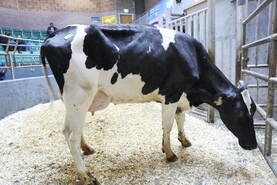Over €1.5m has been spent by county councils in the past five years in the fight to eradicate Japanese knotweed.
Mayo County Council has spent over €500,000 in the last five years in its treatment of the invasive plant and has identified over 1,600 infestations of knotweed.
Clare County Council has spent over €132,000 and Cork County Council has spent almost €170,000 on the weed.

Councils treat Japanese knotweed in a variety of ways, including stem injections, targeted spraying, cutting and removal.
Councils also erect signage to notify farmers and members of the public of the weed and not to cut it. Councils only treat areas of public land and do not treat private farmland.
Japanese knotweed is a non-native species to Ireland and was originally imported from Japan to Europe in the 19th century.
It can grow through tarmacadam, walls, fissures in concrete structures such as slatted tanks and other farm infrastructure, as well as bridges and houses, causing structural damage.
New Japanese knotweed plants will grow from tiny fragments of the plant that are easily spread around by hedge-cutting, rotavators, excavators, hooves, on tyres/tracks and along watercourses.
Ploughing an area with knotweed in it will drag the plant’s rhizomes (roots) across the field and lead to massive spread within a single growing season.
Read more
Farm income from Japanese Knotweed?
‘Spreading like wildfire’ – calls for invasive species scheme
Warning: do not cut, mow, strim or disturb this plant
Over €1.5m has been spent by county councils in the past five years in the fight to eradicate Japanese knotweed.
Mayo County Council has spent over €500,000 in the last five years in its treatment of the invasive plant and has identified over 1,600 infestations of knotweed.
Clare County Council has spent over €132,000 and Cork County Council has spent almost €170,000 on the weed.

Councils treat Japanese knotweed in a variety of ways, including stem injections, targeted spraying, cutting and removal.
Councils also erect signage to notify farmers and members of the public of the weed and not to cut it. Councils only treat areas of public land and do not treat private farmland.
Japanese knotweed is a non-native species to Ireland and was originally imported from Japan to Europe in the 19th century.
It can grow through tarmacadam, walls, fissures in concrete structures such as slatted tanks and other farm infrastructure, as well as bridges and houses, causing structural damage.
New Japanese knotweed plants will grow from tiny fragments of the plant that are easily spread around by hedge-cutting, rotavators, excavators, hooves, on tyres/tracks and along watercourses.
Ploughing an area with knotweed in it will drag the plant’s rhizomes (roots) across the field and lead to massive spread within a single growing season.
Read more
Farm income from Japanese Knotweed?
‘Spreading like wildfire’ – calls for invasive species scheme
Warning: do not cut, mow, strim or disturb this plant







 This is a subscriber-only article
This is a subscriber-only article










SHARING OPTIONS: